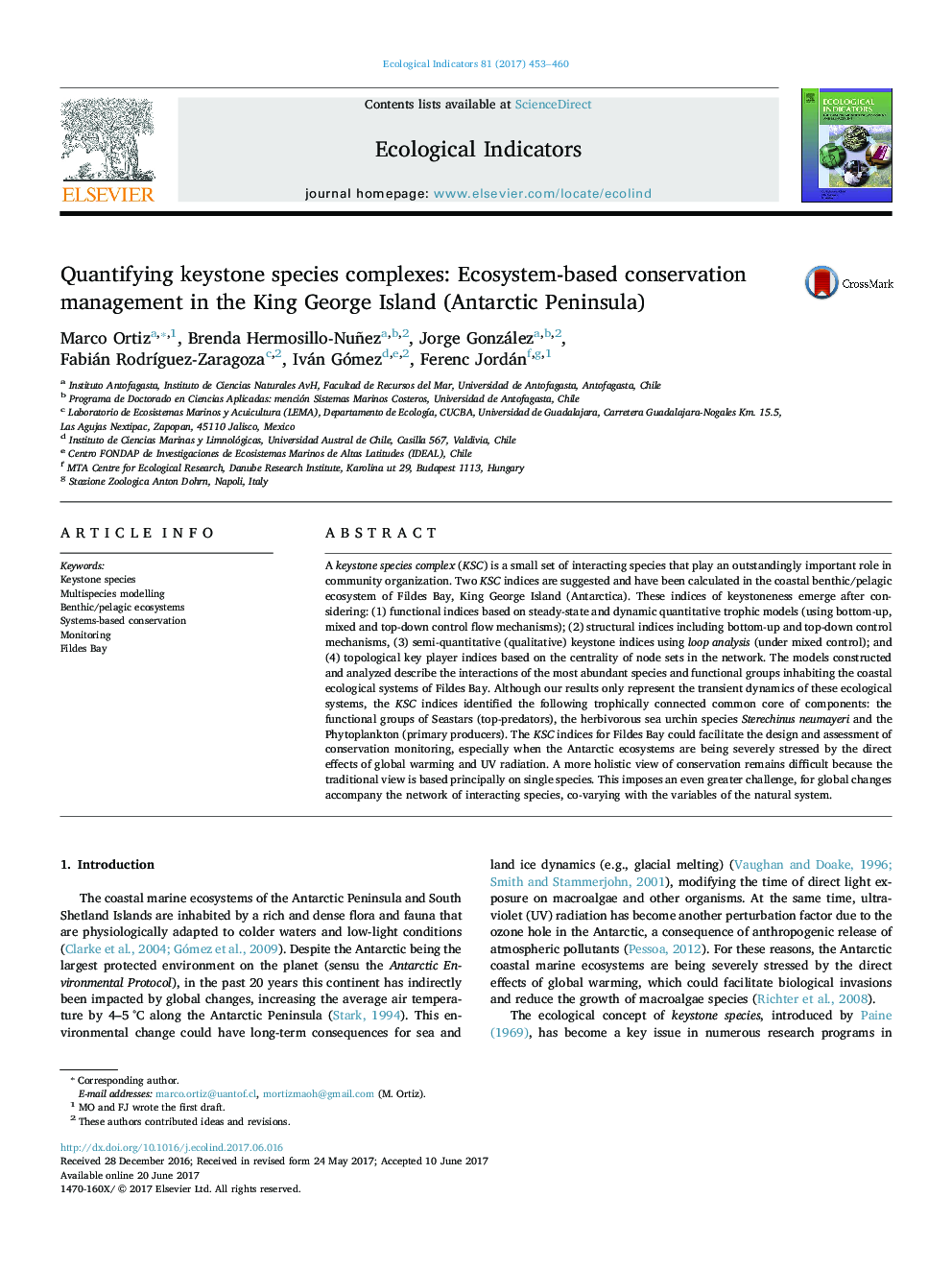| کد مقاله | کد نشریه | سال انتشار | مقاله انگلیسی | نسخه تمام متن |
|---|---|---|---|---|
| 5741448 | 1617121 | 2017 | 8 صفحه PDF | دانلود رایگان |
- Two keystone species complex (KSCs) for Fildes Bay (Antarctica) were determined.
- Both KSC indices share the seastars, Sterechinus neumayeri and phytoplankton.
- The KSCs could facilitate the design and assessment of conservation monitoring.
- A more holistic scope is required specially in the Antarctica, which is being severely stressed.
A keystone species complex (KSC) is a small set of interacting species that play an outstandingly important role in community organization. Two KSC indices are suggested and have been calculated in the coastal benthic/pelagic ecosystem of Fildes Bay, King George Island (Antarctica). These indices of keystoneness emerge after considering: (1) functional indices based on steady-state and dynamic quantitative trophic models (using bottom-up, mixed and top-down control flow mechanisms); (2) structural indices including bottom-up and top-down control mechanisms, (3) semi-quantitative (qualitative) keystone indices using loop analysis (under mixed control); and (4) topological key player indices based on the centrality of node sets in the network. The models constructed and analyzed describe the interactions of the most abundant species and functional groups inhabiting the coastal ecological systems of Fildes Bay. Although our results only represent the transient dynamics of these ecological systems, the KSC indices identified the following trophically connected common core of components: the functional groups of Seastars (top-predators), the herbivorous sea urchin species Sterechinus neumayeri and the Phytoplankton (primary producers). The KSC indices for Fildes Bay could facilitate the design and assessment of conservation monitoring, especially when the Antarctic ecosystems are being severely stressed by the direct effects of global warming and UV radiation. A more holistic view of conservation remains difficult because the traditional view is based principally on single species. This imposes an even greater challenge, for global changes accompany the network of interacting species, co-varying with the variables of the natural system.
Journal: Ecological Indicators - Volume 81, October 2017, Pages 453-460
